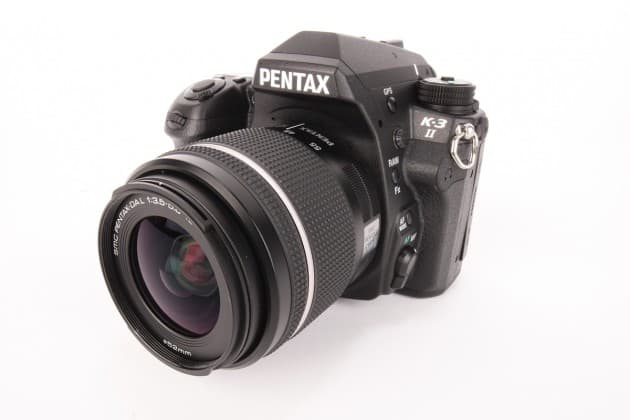Autofocus

The K-3 II has fewer focal points than some of its rivals
The Pentax K-3 II uses a SAFOX 11 TTL phase-detection sensor module, and the camera features a total of 27 autofocusing points. When compared with the likes of the Nikon D7200 and the Sony Alpha 77 II – which boast 50+ focus points – it can look a little under gunned. However, the K-3 II does have 25 cross-type focus points, which analyse vertical and horizontal details to achieve more precise and faster focusing.
In addition, the centre point and the one above and below it are designed to work at f/2.8, resulting in quicker autofocusing when using large aperture lenses. So, while the K-3 II may not have as many AF points as some other models, the 27 it does have are rather good and achieve quick focusing – and for most photographers, 27 should be more than enough.
Users can choose between AF single, AF continuous and manual focusing. In autofocusing modes, there’s a choice between Spot, Select, Zone Selection, Expanded Area and Automatic (across all 27 points).

The camera acquires focus quickly and accurately
Improvements have been made to the continuous-focusing system, and Pentax claims this is the fastest continuous-focusing camera of any of the K-series DSLRs. This is attributed to its state-of-the-art AF algorithm and the advanced Pentax Real-Time Scene Analysis system. This uses subject analysis information provided by the 86,000-pixel RGB colour metering sensor to improve AF tracking calculations in continuous shooting mode.
In use, the continuous focusing is quick at finding and keeping the subject in focus, although for sports and wildlife shooting, more focusing points would be preferable. For single focusing, it’s similarly speedy even in low light conditions and typically finds focus in a fraction of a second. In fact, it’s surprisingly fast in low light, often finding near-perfect focus and then honing it with small adjustments thereafter.
When using live view, focusing is slower overall – but in comparison to similar APS-C DSLR cameras it’s still rather speedy, finding focus reasonably quickly and accurately. In good light it’s very fast thanks to the contrast-detection AF.







